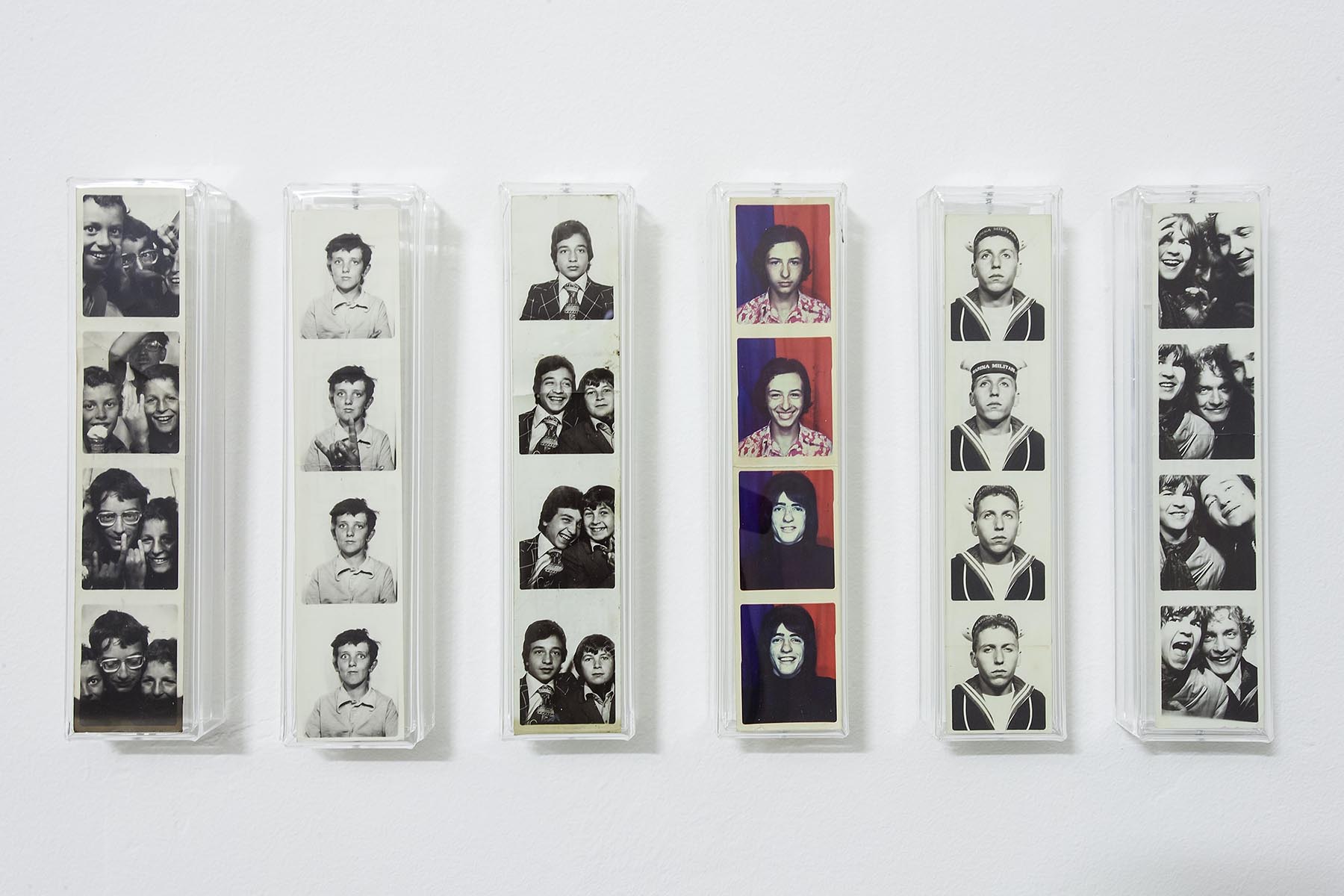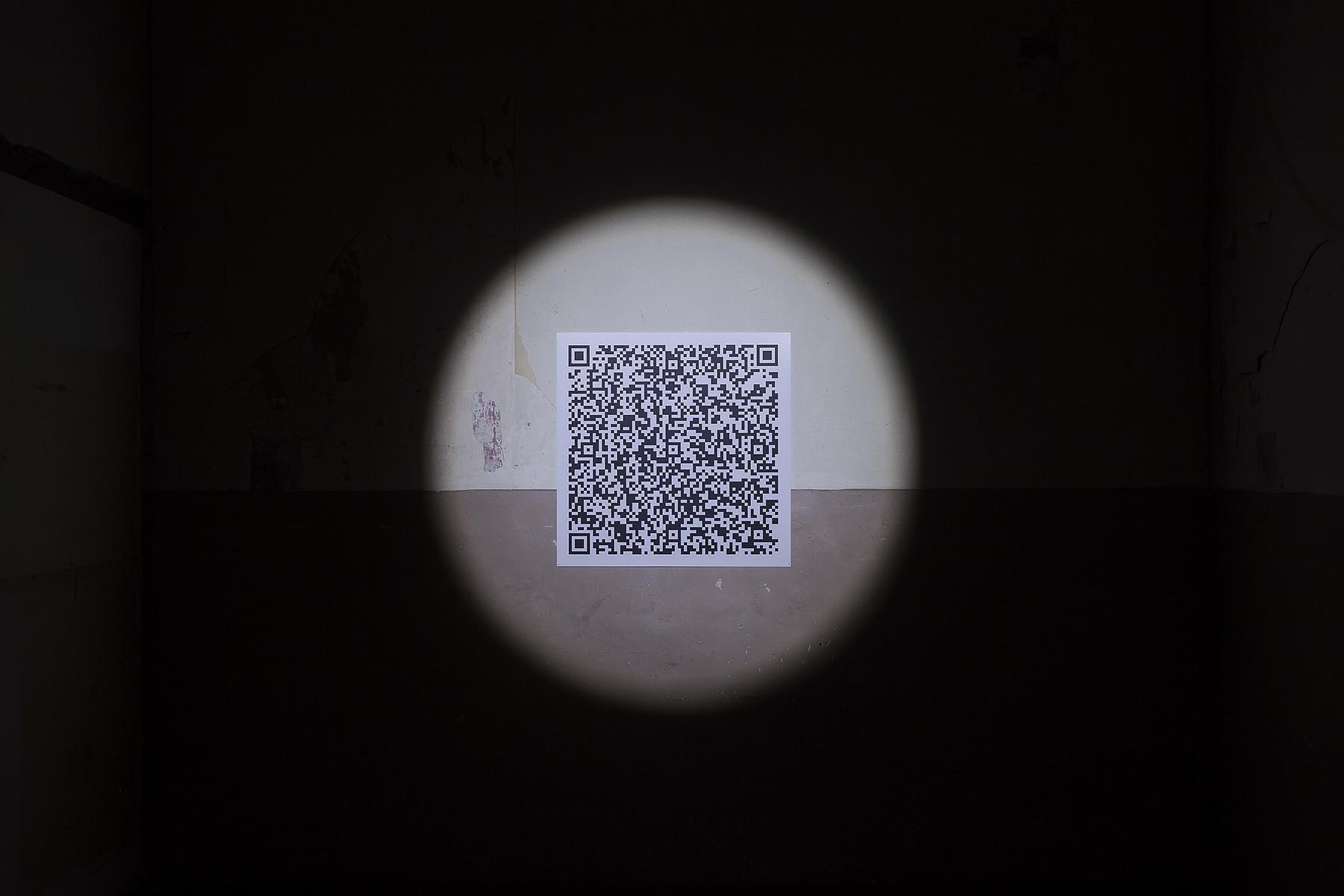09.10.2014 \\ 30.11.2014
Rumori telepatici (Telepathic Static) is the title of Franco Vaccari’s first solo exhibition to be held in Naples, an event in which the artist’s sign is expressed through the display of works configured as instruments of evocation, in the depiction of a research that affirms and defines through encounter and contingency. The work, which is deliberately denied the status of an aesthetic object, becomes the instrument by which to attract the viewer’s participatory attention and simultaneously shift it towards the impalpable, which is less closely related to a uniquely decipherable and immediate perception of a concept or expression. The perception is thus shifted to the plane of the not fully determined, that glint that is blurred vision and suffused sound, as when one is pervaded by the strange sensation of not knowing whether what he has seen or heard is real or imagined, personal or shared.
The exhibition of historical but previously unpublished works, such as the strip of photographs from Photomatic d’Italia, 1973-1974, shot in Campania and never exhibited before; the creation of environments on the boundary line between private and public space, with the construction of a practicable camera obscura and a space in penumbra furnished only by sound; the projection of the historical videos I Cani Lenti, 1971 (The Slow Dogs, 1971) and Provvista di Ricordi per il Tempo dell’Alzheimer, 2003 (Supply of Memories for Alzheimer Time, 2003), and finally the decryption of QR Codes make up the exhibition complemented by the glow of the attractor beacon that dazzles the radius of sky above Palazzo Caracciolo di Avellino.
In the second half of the 60s, Franco Vaccari developed the use of technology to an unprecedented automatism, leaving the photographic medium free to operate without the filter of authorship and proposing that the viewer should compose his work. At the 1972 Venice Biennale and in his personal room at that event, an id photograph booth invited visitors to be photographed automatically and leave an instant trace of their passage on the adjacent wall. Becoming a theorist of the selfie 40 years before its times, Vaccari proposed the dissolution of the expressive conditioning associated with the presence of the artist behind the camera, so allowing the person portrayed to establish a private relationship with the medium and anticipating a cultural phenomenon that is the full expression of an era like our own, based on the public dissemination of one’s image in the constant sharing of private experience. Posting one’s own strip on the wall entailed tweeting, publishing and linking one’s photos in the hope of receiving as many likes as possible, but well before internet existed. The same was true of the system of pay booths scattered around Italy between 1972 and 1974, which publicized the search for faces for making a film through the selection of the photos left in the container. The images collected then constituted the strip of the series Photomatic of Italy (1972-74) exhibited on the walls of the Fondazione Morra Greco for the first time ever. These selfies of Neapolitans, Salernitans and Avellinians of the period, their looks, gestures, clothes and hairstyles, composed a vivid document of manners which did not remain a sterile realistic documentation of the society of the time, but left room for the creation of a link with a meaning arising from the encounter between the observer’s emotion and the enthusiasm of the subject of the self-portrait.
If the first exhibition space explores the technological unconscious in the real time exhibition, the reflection on the relations between public and private space is achieved through the interferences of the next room. The camera obscura recreated in the adjacent space physically catapults you into the immediate duplication of the dimension of experience. You enter a camera obscura that functions with the same mechanism as a camera, with the reflection of the external environment penetrating inside its space and standing out on the wall. The irruption of the street into the exhibition space makes it possible to develop a different way of seeing and listening, when the personal decoding of the forms and shadows that appear are completed by the interpretation of the sounds distinguishing the exterior. The camera obscura also becomes audible. Vaccari recommends to the spectators first a historical listening to the first space while here he pushes for a complex perception, a set of micro sensations that puts them into communication with something they do not participate in directly, like the photographic image and the reflection of the contingent.
With the projection of I Cani Lenti (The Slow Dogs), the noise is transformed into sound and the babble of the square converted into the notes of Pink Floyd accompanying the screening of one of the videos most representative of the artist’s poetic. Again in this case there was an anticipation of a technical nature: filming the protagonists, dogs, in slow motion, lowering the shot angle from the operator’s level to that of the animal. Slow motion was not yet feasible in final cut and the vision of something extremely common was fragmented by slowing the movement to allow for an almost measured perception with a subtly investigative character.
If photomatic, camera obscura and the videos represent the historical record of an extremely contemporary work, there is no reason to be surprised by the presence of an attractor beacon, and its beam 400 meters high, located on the first floor of the Foundation. The beacon exhibited is exactly the same as that used to attract the public of young patrons to clubs and is used here to send a clear message: that of art which becomes such because it is based on the interaction with the other and the risk entailed by that exchange. After all, why go to a gathering place if not to conflict with and be completed by the looks and interaction of others? Because the exhibition space becomes a place of sharing and meeting, of participation, not as mere consumers but as creators of the meaning of what is being exhibited. In Vaccari’s art one almost reaches a plane of equity between the function of the viewer and that of the artist, by ascribing to both subjects a decisive role in the construction and representation of the work. The existence of this relationship is a demonstration of how art can engage the immediacy of sensation and not seek to attain forms of intellectualism independent of the relation with reality.
To put the visitor-viewers further at ease, Vaccari takes them into a very personal dimension in the penumbra, furnishing the room with the sound of an actual telephone-answering machine, an invitation to make everyone feel at home. The participatory act is immediately shown with the display of a series of QR Codes, which can be deciphered with a smartphone, each associated with an image. The artist’s work on the language of the bar code goes back to 1989, and subsequently at the Venice Biennale in 1993 with bar code in which the use of the aesthetic of the code, used to identify merchandise and regarded as purely functional image devoid of any symbolic dimension, becomes a way to draw attention to a news event and at the same time becomes, as a bar, like a physical place where we can relax and reflect on what we have seen. Vaccari’s investigation of and interest in the perception of that sign continued when he accompanied the evolution of digital language by passing from speculation on the bar code to the newer QR Code. A fundamental poetic action is triggered by the relation between the two elements, the historical image and the last-generation code. The reading of the image is immediate; you look at it and find yourself reflected in its essence, seeking reasons and imagining scenarios that remain partially obscured by the simultaneous illegibility of the codes. After decoding the pattern of pixels, the words deciphered become a sudden apparition of meaning, the flash that illuminates the photo and the charge of content and ideas. The effect of decoding becomes ironic and pungent when you find yourself observing, with smartphone in hand, as the closest substitute for the camera in our time, an image dating back to the isle of wight festival in the 70s, in which the generation of living, and not that of seeing oneself living, that felt experience rather than recording it, was candidly able to interfere in our system of thought and enjoyment associated with the use of contemporary technology.
The circle is closed by the legacy that Vaccari leaves us through the indelible trace of his passage represented by Supply of Memories for Alzheimer Time, 2003. The total involvement of oneself in a video, in which life in all its most private aspects becomes a story, is configured as a personal collection of experiences to preserve the past lived through, which has an individual significance, yet without any pretensions becomes universal. Into the identification of a cure for the disease that consists simply in an attempt to resist oblivion, between selfies and intangible dimensions, sneaks that gleam consisting of the senses of hearing, sight, experience, revealed and internalized to become sound, image, story by which one is, telepathically, penetrated.
Anna Cuomo
All images Courtesy Fondazione Morra Greco, Napoli
© Amedeo Benestante















